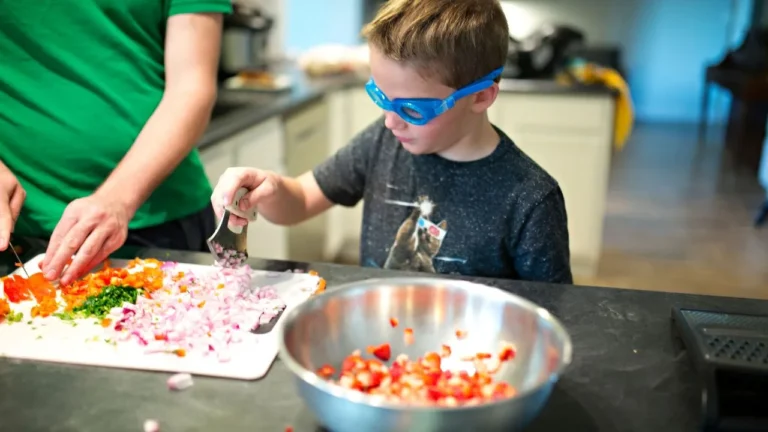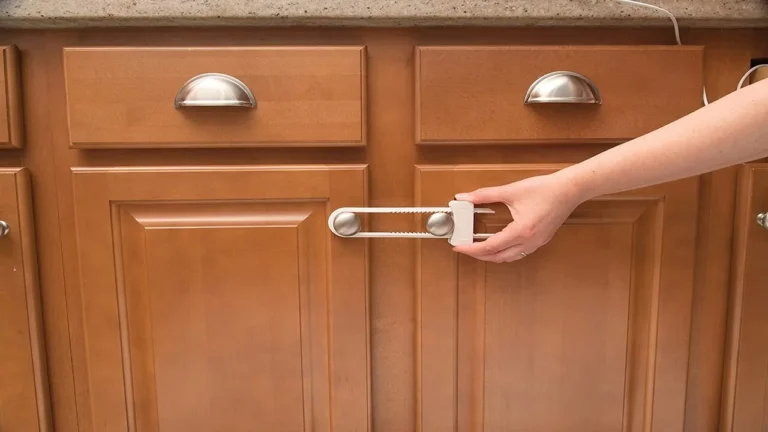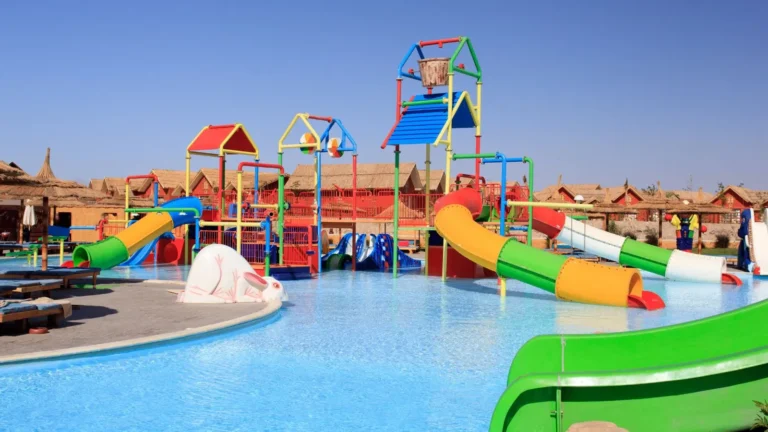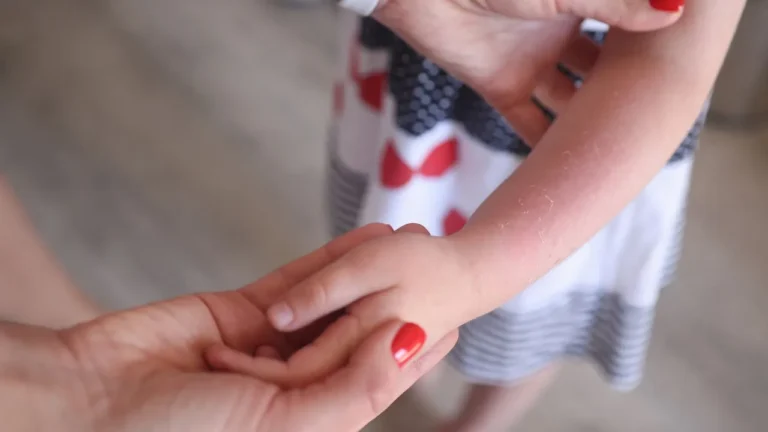Everyday First Aid Tips for Kids Parents Should Know
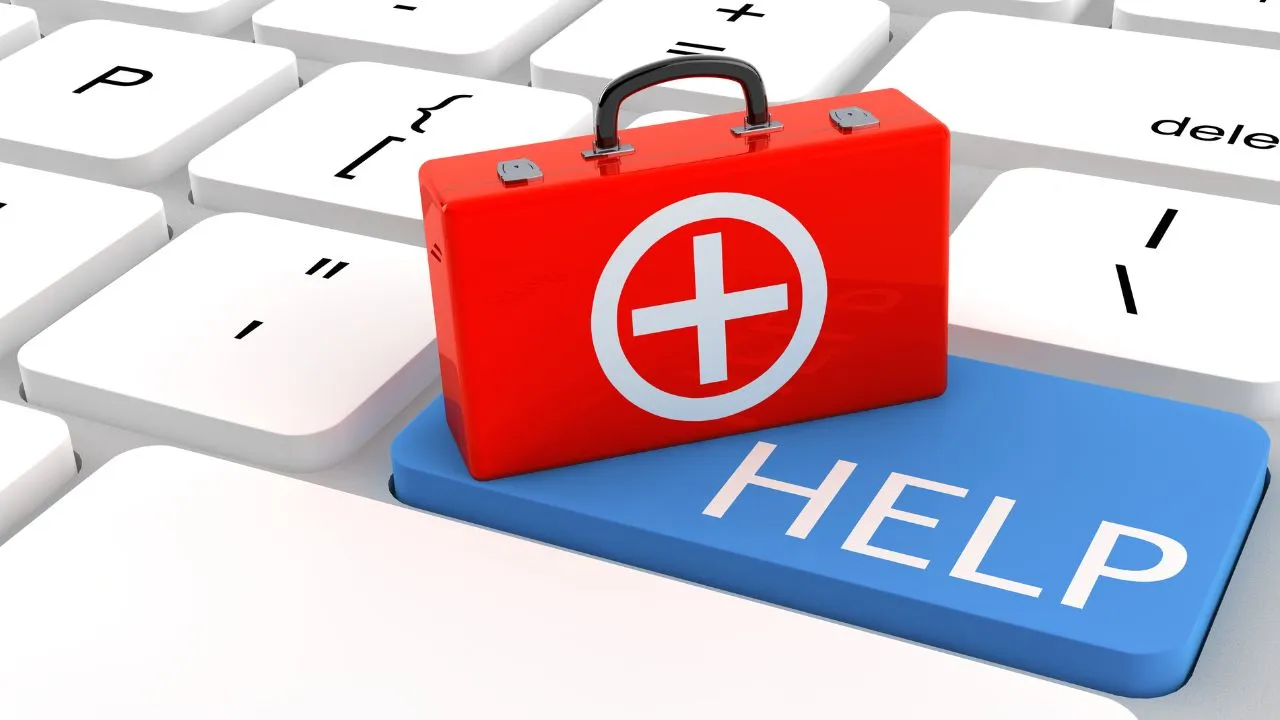
Wouldn’t it be awesome if we could envelop our kids in bubble wrap for protection? But let’s be real: Life happens. Kids fall, scrape their knees, or even gasp and swallow something they shouldn’t. While we can’t prevent every accident, we can be prepared for those “uh-oh” moments.
Sure, taking a first aid class would be the gold standard, especially learning CPR. But if you’re looking for some quick tips for everyday common injuries that you can teach your child, you’ve come to the right place.
What’s In Your First Aid Kit?
Before we dive into how to treat injuries, let’s make sure you’ve got a well-stocked first-aid kit. Your kit should include:
Does your first aid kit look like an abandoned toy box? Time to spruce it up!
How to Treat A Cut or Scrape
First things first, stop that bleeding! Apply gentle pressure with clean gauze or a wet towel. Next, it’s hand-washing time for you. Clean that cut with soap and water, apply an antibiotic ointment, and seal the deal with a bandage. If your child may be eligible for the Bleeders’ Hall of Fame—meaning the bleeding doesn’t stop after about five minutes you may need to assess the situation and —call your pediatrician or call for help if it’s an emergency.
Bruises
Ah, bruises, the tattoos of childhood adventure. Got a swelling? Apply ice packs to show it who’s boss. If that bruise just won’t quit, or if it’s auditioning for a role in a horror movie, ring up your pediatrician. They can advise whether a pain reliever could be your child’s new best friend.
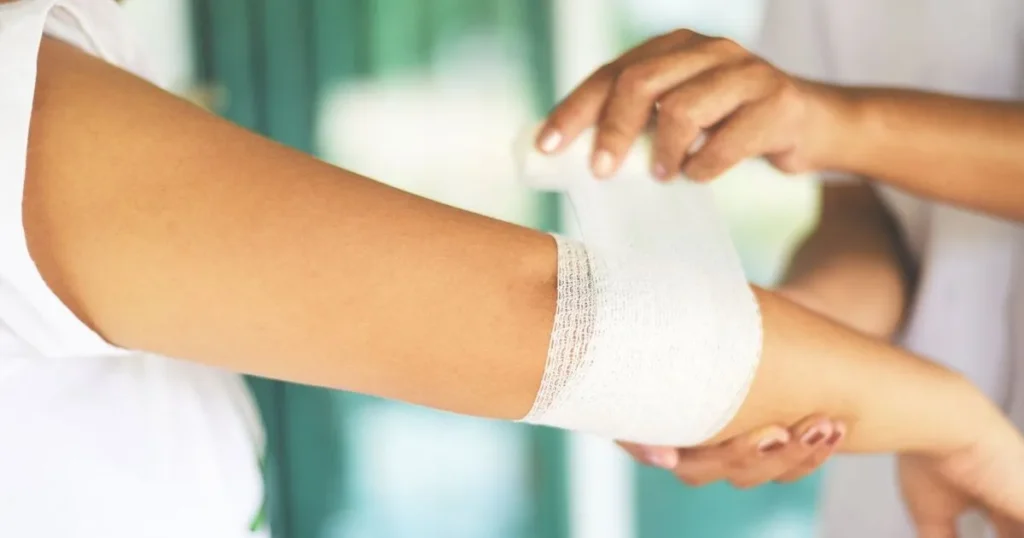
Treat Deep Cuts and Puncture Wounds
Deep wounds—like “Mom, can you see my bone?”—need medical attention. Apply pressure to the cut so to stop bleeding, but don’t play doctor at home. You might need stitches and a tetanus shot. So, head for emergency care and keep those non-latex gloves on if you’ve got them.
Treat An Insect Or Animal Bite
Ever get that sudden call from school about your child’s altercation with a bee? Here’s how to handle bites and stings.
Stings: Don’t Sweat the Small Stuff
A sting isn’t fun, but it’s often not dangerous. Remove that lingering stinger with the edge of a credit card—yeah, you read that right. Follow up with a cold compress and check with your pediatrician about over-the-counter pain medication dosages.
Bug Bites: Itchy & Scratchy Chronicles
A mosquito bite might make your child the itchiest kid in the park. If things get too itchy or swollen, consult your pediatrician about ointments or antihistamines. Spider bites or tick bites? Keep calm but move fast; call your pediatrician or poison control. Yes, bring that captured tick in a Ziplock bag. Forensics, baby!
Identifying Allergies from Insect Bites and Stings: When Cute Turns Scary
Does your child look like they lost a fight with a balloon animal? Swelling, rashes, or hives? Call your doctor. Difficulty breathing or losing consciousness? This is a dial-911-now situation.
Animal Bites: From Aww to ER
Ever had that moment when a ‘cute’ animal turns Cujo? If your child gets bitten, medical attention is non-negotiable for tetanus or maybe rabies vaccines. Snakebites with an unidentified snake? Head to the emergency room like you’re in an action movie.
Treat a Bump on the Head
Oh boy, the head is the control center of the body, right? So when your kiddo gets a bump on their melon, it’s natural to freak out a bit. But hold on, there’s a difference between a mere “oops” and an “oh no!” Let’s dive in.
The Innocent Goose-Egg
You know those adorable bumps that make your child look like they’re sprouting a unicorn horn? Usually, those are okay, just unsightly.
The Signs You Don’t Want to Ignore
If your child is displaying any of these symptoms, get professional help pronto.
Seek medical help by calling your pediatrician if you see any of these signs.
911 Emergency or Bust
For these symptoms, skip the pediatrician and head straight to emergency care:
The “Don’t Move Them” Scenario
If your child’s injury seems severe, involving their head, neck, or back—keep them where they are. Call 911 and let the pros handle the heavy lifting, literally.
See, with just a dash of knowledge and a sprinkle of watchfulness, you can navigate the bumpy journey of parenting. So next time a head bump occurs, you’ll know whether to just give it a kiss or rush to the ER.
The Nosebleed Chronicles
Ah, the dreaded nosebleed—a right of passage in most childhoods! Sure, it can look like a scene from a horror movie, but usually, it’s just another bump in the road of growing up.
The Quick Fix for a Nasty Nosebleed
Nosebleeds usually look worse than they are. I mean, if Tarantino directed childhood, nosebleeds would be the star, right? But no worries:
🚨 Red Alert: If the nosebleed doesn’t stop in 5-10 minutes or it’s a “Carrie at the prom” level, call your pediatrician or rush to the ER.
Stopping Frequent Nosebleeds
Do you a frequent nose bleeders on your hands? Time for a doctor’s visit to explore underlying causes.
Ouch! How to Treat a Burn
It happens. Kids + curiosity = burns. But what’s the first thing to do when your little explorer gets too close to the flame?
What to Do When the Lights Go Out (Fainting!)
There are few things more unsettling than watching your kid take an unexpected nap—aka fainting.
Fainting can be alarming, but like everything else in childhood, it’s usually a phase. Of course, a chat with your pediatrician is never a bad idea.
When Your Child’s Body Throws a Curveball: Navigating Seizures to Sprains
Being a parent is kinda of like being a superhero, minus the cape—although, let’s be real, a cape would be cool. You have to be ready for anything and everything. So, let’s talk about some not-so-fun “surprises” kids may face, and how to tackle them like a pro!
The Heart-Stopping Moment: Dealing with Child Seizures
Child seizures can be terrifying, but, hey, you’ve got this!
Note: CPR only if they’re not breathing. 5 minutes of seizing or a debut seizure? Dial 911 ASAP.
Broken or Just Bent? Fractures and Sprains
Kids break; it’s almost like they’re testing their warranty. But how do you know if it’s a fracture or a sprain?
Avoid DIY splints; your home is not an episode of “MacGyver.” An X-ray is your next stop to know what you’re really dealing with.
Nightmare Scenario: Poison Ingestion
“Oh, what’s this bottle? Let me taste it!”—said every toddler, ever.
For any alarming symptoms like breathing issues or disorientation, 911 is your go-to.
“I Can’t Breathe!”: Allergic Reactions
Ah, allergies—the universe’s practical joke on humankind.
Signs of a ‘Mild’ Reaction
Signs of ‘Run-to-the-ER’ Anaphylaxis
When in doubt, get to emergency care. Sometimes the line between a mild reaction and anaphylaxis is thinner than a tightrope.
Remember, life throws curveballs, but your awareness and preparedness are your home runs. Keep those vibrations high and that first aid kit ready!
“Help, I Can’t Breathe!”: Choking Scenarios
Few things are as nerve-wracking as a choking child. Take a deep breath—your kiddo is looking to you for help.
When Coughing is Actually Good
If they’re coughing, great! That means their airway isn’t completely blocked. Let them cough it out while you fight every instinct to reach into their mouth.
Heimlich to the Rescue
For kids over 1 year who aren’t breathing or coughing:
Seek medical care if the situation doesn’t improve. CPR is the next step if you’re trained.
What Belongs in the Holy Grail (a.k.a First Aid Kit)
Whether you’re home, on the go, or vacationing in a galaxy far, far away, your first aid kit is your new best friend.
Home Sweet Home Kit
Mini-me To-Go Kit
Just Bandaids, hand sanitizer, and antiseptic wipes will suffice. Don’t forget any emergency meds like asthma inhalers or EpiPens.
The Final Word: Basic First Aid Tips For Kids
Let’s get real, folks. Knowing what to do before your kid decides to go Evel Knievel on you is a game-changer. But hey, prevention is key, too! You’ve already baby-proofed the electrical outlets and got those cabinet locks that even you can’t open, right? Despite all that, you might still find yourself in a scene straight out of ‘Home Alone.’
Listen, your parental spidey-sense is the real MVP here. Trust your gut when it screams, “Something’s off!” And if doubt starts to do the cha-cha in your mind, go ahead and consult a medical pro. Trust me, you’d rather get an eye-roll from a doctor than a heartache later on.
So there you have it, your crash course in becoming the first-responder of your household. Accidents? Bring ’em on! You’re not just a parent; you’re a superhero with a first aid kit.

